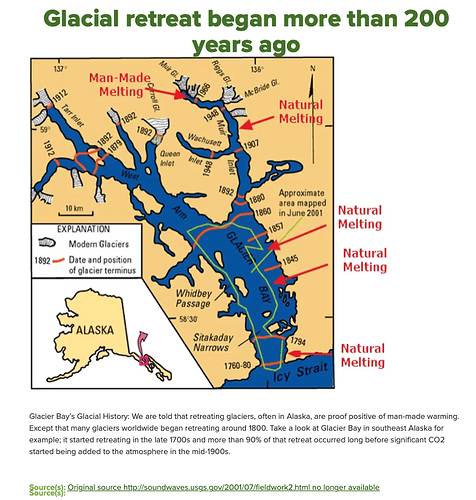I doubt it. Both seem important.
I didn’t realize that agriculture was a normal part of nature that didn’t come from human intervention.
Methane is a potent greenhouse gas on a per mole basis. It currently appears to contribute about 20% of anthropogenic warming (graphs also here). On the plus side, its lifetime in the atmosphere 1-3 decades. Industry, agriculture, waste and fossil fuel extraction are contributors and there is potential positive feedback with warming contributing to increased output from wetlands and melt areas. Atmospheric methane concentration vs time here.
Also, like with CO2, current methane concentrations are not ‘saturating’ for heat retention capability.
Temp: Parker DE, Legg TP, Folland CK (1992) A new daily Central England Temperature Series, 1772 – 1991. Int. J. Clim., Vol 12, pp 317–342, Met Office Hadley Centre observations datasets
CO2: Boden TA, Marland G, Andres RJ (2016) Global CO2 emissions from Fossil-Fuel Burning Cement Manufacture and Gas Flaring 1751 – 2013. CDIAC, Oak Ridge National Laboratory, U.S. Dept of Energy, Oak Ridge, TN, USA, DOI 10.3334/CDIAC/00001_V2010
Source(s):
Source(s):
Source(s):
Source(s): Milankovitch cycles - Universe Today
Source(s): NASA: Milankovitch (Orbital) Cycles and Their Role in Earth’s Climate ,
Temp: Parker DE, Legg TP, Folland CK (1992) A new daily Central England Temperature Series, 1772 – 1991. Int. J. Clim., Vol 12, pp 317–342, Met Office Hadley Centre observations datasets
CO2: Boden TA, Marland G, Andres RJ (2016) Global CO2 emissions from Fossil-Fuel Burning Cement Manufacture and Gas Flaring 1751 – 2013. CDIAC, Oak Ridge National Laboratory, U.S. Dept of Energy, Oak Ridge, TN, USA, DOI 10.3334/CDIAC/00001_V2010
Source(s):
Source(s):
Source(s):
Source(s): Milankovitch cycles - Universe Today
Source(s): NASA: Milankovitch (Orbital) Cycles and Their Role in Earth’s Climate ,
As many, maybe most, climate models say should have happened due to human activity.
You keep pretending that things that conform to the models contradict the models. The only conclusion I can come to is that you’re parroting things others have said and haven’t actually investigated things for yourself.
I’m sure that it wasn’t just at OSU that people noticed the retreat of glaciers a few centuries ago, looked for correlations, and saw that human activity fit the pattern.
Thank you for the links.
Just make ONE claim will you Bill? One consilient claim. Got one? Please?
One that real, honest, objective, non-partisan, scientists, like you used to be, agree on.
AND . WHAT . ARE . WE . GOING . TO . DO . WHEN . THE FOSSIL . CARBON . IS . ALL . GONE ?
Fair enough. For a long time, carbon was thought to last for 300 years. Now with the new mining and drilling techniques, maybe 500 years. Nuclear Fission power using the Thorium breeding will be useful for many hundreds of years. The best Thorium deposits are in India…for what it is worth. There is a lot of talk about fusion. From my perspective, the laws of physics are not favorable. And, it some places, techniques may be developed to take great advantage of of geothermal heat.
Notice that the bulk of the melting for Glacier Bay occurred well before 1960 when carbon dioxide levels were becoming noticeable.
Consilient links? Not bad science. We have 100 years of carbon. Then what? There is no thorium cycle. Uranium runs out in less.
The sun and the wind and the waves and the tides won’t. Ever.
Fusion is fantasy.
I think people have already told you, but one more time and I’ll leave it. Milankovitch cycles are explained here:
Another reference: “Saving Us” pg. 44, Dr. Katharine Hayhoe, Climate Scientist.
In a nutshell, the current Milankovitch cycle direction is cooling, yet the world is warming.
